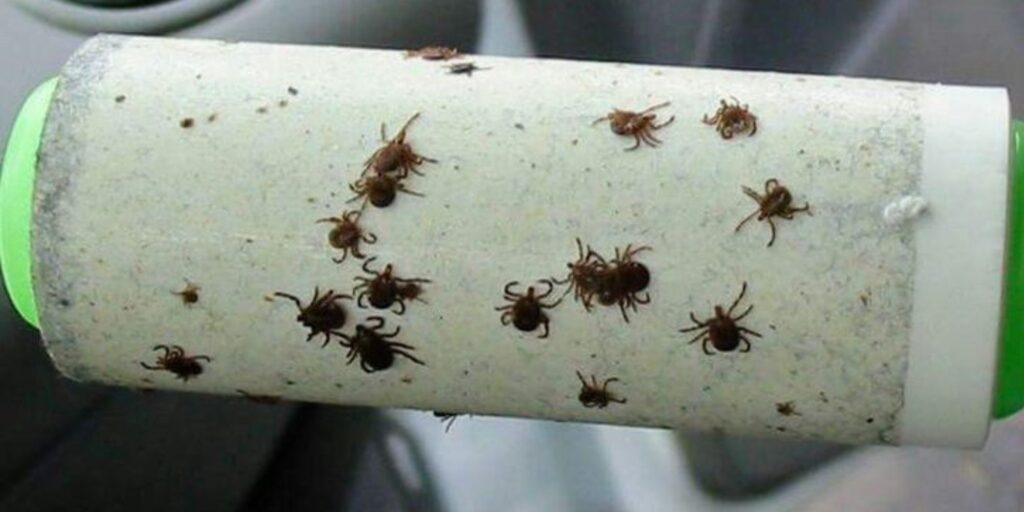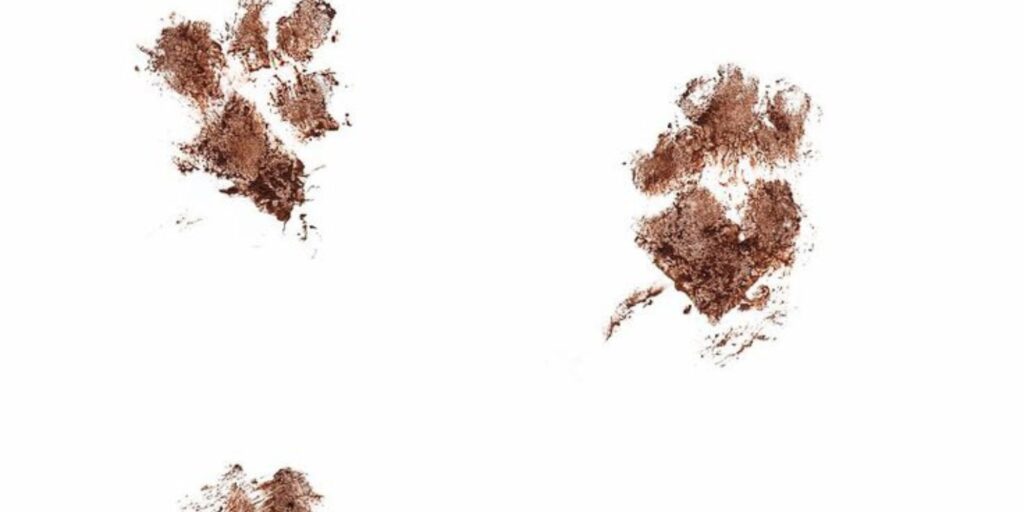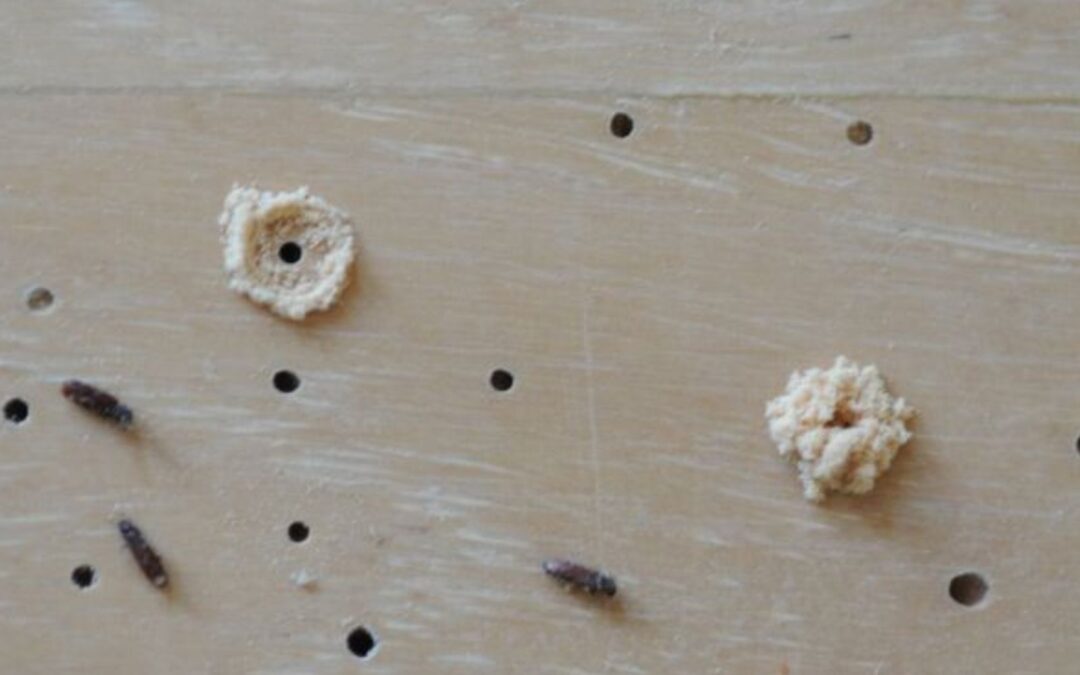The Powderpost Beetle is a destructive pest that primarily targets wood, including furniture, flooring, and structural beams. These beetles are small, typically 1/8 to 1/4 inch long, and are known for their ability to burrow deep into wood, leaving fine, powdery frass behind as evidence of their activity. The larvae are in the destructive stage, feeding on the wood’s cellulose for several months before emerging as adult beetles. Powderpost Beetles can cause significant damage, especially in untreated or old wood, weakening structures over time. Signs of an infestation include small, round exit holes in the wood, powdery residue, and the presence of live beetles. Preventing infestations involves using treated wood, sealing cracks and crevices, and maintaining a dry environment, as these beetles thrive in moist conditions. If an infestation is suspected, professional pest control services may be necessary to eliminate the problem and fully prevent further damage.
Outline for “Protect Your Home: Effective Treatments Against Powderpost Beetles”

Powderpost beetles are small insects that can cause significant damage to wooden structures in your home. Understanding their biology and habits is crucial for effective treatment. These pests thrive on wood, particularly when it’s damp or improperly stored. Knowing how they live and reproduce will help you identify an infestation early.
The life cycle of powderpost beetles includes several stages: egg, larva, pupa, and adult. The larvae are the most damaging stage, tunneling through the wood and weakening its integrity over time. By learning more about this cycle, homeowners can better anticipate when infestations may occur.
Target materials mainly include hardwoods like oak and maple, but softwoods aren’t safe either. Any untreated or damaged wood offers a perfect breeding ground for these pests. Identifying where these materials exist in your home is vital to protecting against potential invasions.
Damage from powderpost beetles often appears as fine dust around infested areas or small exit holes in the wood surface. Recognizing these signs early can prevent costly repairs down the line and ensure your home remains a sturdy haven.
Introduction
Powderpost beetles are a hidden menace that can wreak havoc on your home. These small, wood-boring insects often go unnoticed until their damage becomes visible. Understanding these pests is crucial for homeowners who want to protect their investments and maintain the integrity of their property.
These beetles thrive in various wooden materials, including furniture and structural components. Their larvae tunnel through wood, leaving behind fine powdery frass—hence the name “powder post.” Many people may not realize they have an infestation until significant damage occurs.
The life cycle of powderpost beetles involves several stages: egg, larva, pupa, and adult. Each stage poses its own set of challenges for homeowners trying to manage or eliminate them from their living spaces. With a little knowledge about this pest’s habits and characteristics, you can take proactive steps toward safeguarding your home.
In subsequent sections, we’ll discuss where these pests cause damage and how you can control them effectively. By staying informed and vigilant, you can protect your home from powderpost beetle infestations.
About Powderpost Beetles
Powderpost beetles are small wood-destroying pests known for their destructive habits. These insects can vary in size, typically measuring between 1/16 to 3/8 inch long. Their coloration ranges from brown to black. Despite their tiny stature, they can cause significant damage to wooden structures and furniture.
These beetles primarily infest hardwoods but may also target softwoods under certain conditions. The larvae burrow into the wood, creating a network of tunnels that weaken the structural integrity over time. This behavior makes powderpost beetles particularly concerning for homeowners with exposed wooden beams or antique furnishings.
The adult beetle emerges from the wood as a small round hole, leaving telltale signs of its presence behind. This emergence often occurs during warm weather when humidity levels rise, making it crucial for homeowners to be vigilant during these times.
Understanding powderpost beetles is essential for effective pest control. Recognizing early signs of infestation ensures timely intervention before severe damage occurs. Awareness is key in protecting your home from these relentless invaders.
Powderpost Beetle : Life Cycle
The life cycle of the powderpost beetle is fascinating and crucial to understanding how to manage infestations. It begins with adult females laying eggs in tiny crevices or holes within wood materials. This initial step is vital, as it ensures that the larvae will have an ideal environment upon hatching.
After a few weeks, the eggs hatch into larvae. These young beetles are small and white, resembling grains of rice. They immediately begin burrowing into the wood, feeding on cellulose-rich fibers. This phase can last several months to years, depending on environmental conditions and food availability.
Once they mature enough, they transition into pupae while still inside the wood. During this time, significant changes occur as they develop features like wings and legs needed for adulthood. This stage lasts only a few weeks but marks a critical transformation in their lifecycle.
Adults emerge from small exit holes drilled into the surface of the wood. With new wings ready for flight and reproduction ahead of them, these emerging beetles continue the cycle by seeking out mates and new locations to lay their eggs again.
Powderpost Beetle : Target Materials
Powderpost beetles primarily target wood. They have a particular fondness for hardwoods, making them a significant threat to furniture and structural components in your home. Due to their dense nature, species such as oak, maple, and ash are especially vulnerable.
These pests thrive on freshly cut wood that is still relatively moist. This means new construction or renovations can often be at risk if the proper precautions aren’t taken. Even dried lumber can attract these insects if it’s not adequately treated.
Powderpost beetles infest solid wood, engineered woods, and products like plywood and particleboard. Their larvae tunnel through the material, weakening its integrity over time without leaving obvious signs of damage until it’s too late.
It’s essential to recognize the specific materials in your home that might be at risk from this pest. Regular inspections and proactive treatments can help protect these valuable assets from infestation before they become severely compromised.
Powderpost Beetle : Type of Damage and Where It Occurs
Powderpost beetles are notorious for the damage they inflict on wooden structures. Their larvae tunnel through wood, creating a network of tiny holes that can compromise the integrity of furniture and building materials. If left unchecked, this can lead to significant structural issues.
The areas most affected by these pests are typically hidden from view, making it easy to overlook their presence. Floors, beams, and wall studs are prime targets for infestation. Often, homeowners discover evidence only after noticing fine powdery frass accumulating beneath infected wood.
Softwoods like pine or fir tend to be more susceptible than hardwoods. However, even oak and other dense woods aren’t entirely safe from an attack. The extent of damage often depends on how long the beetles have been at work; what starts as small entry points can escalate into large galleries over time.
Additionally, infestations aren’t limited to older homes with aged timber. Newly constructed buildings using untreated lumber may also become victims if proper precautions aren’t taken during installation or storage periods before construction is complete.
Powderpost Beetle : Procedures for Control
To effectively control powderpost beetles, start by identifying infested areas. Look for small holes in wood surfaces and fine, powdery frass near these openings. This step is crucial since it allows you to target your treatment precisely.
Once you’ve pinpointed the problem zones, consider using insecticidal treatments specifically designed for wood-boring insects. Borate-based solutions are popular because they penetrate the wood fibers and disrupt the beetle’s life cycle. Apply these chemicals directly to affected areas or during routine maintenance.
Another effective procedure involves heat treatment. By raising the temperature of infested materials above 130°F for several hours, you can eliminate both larvae and adult beetles without resorting to harsh chemicals. However, due to its complexity, this method may require professional assistance.
Fumigation can be a last-resort option for severe infestations that traditional methods can’t alleviate. This process involves enclosing the affected area and releasing a gas that penetrates all forms of woodwork present in your home, ensuring thorough elimination of the pests and their eggs.
Powderpost Beetle : Management Strategies
Effective management strategies are crucial for controlling powderpost beetle infestations. First, it’s important to identify and address the source of moisture in your home. These pests thrive in humid environments, so ensure proper ventilation and repair any leaks that may contribute to increased humidity levels.
Next, consider using insecticides specifically designed for wood-boring insects. Applying these chemicals directly to infested areas can significantly reduce their population. Ensure you follow manufacturer instructions carefully for safety and effectiveness.
Regular inspections play a vital role in early detection. Check wooden structures, furniture, and flooring periodically for signs of infestation, such as tiny holes or frass (powdery waste). Catching an infestation early can save you from extensive damage later on.
Enlisting professional pest control services may be necessary if the infestation is severe. Experts have access to advanced treatments like fumigation or specialized injectables that target powderpost beetles effectively. They will also provide guidance on maintaining a pest-free environment moving forward.
Powderpost Beetle : Tips on Preventing Infestations
Keeping your home safe from powderpost beetles starts with vigilance. Regularly inspect wooden structures in your house, especially in areas like basements or attics where moisture can linger. Look for tiny holes or fine dust on surfaces as early signs of an infestation.
Moisture control is key to prevention. Ensure proper ventilation and humidity levels in your home. Utilize dehumidifiers if necessary, particularly in damp spaces. The less attractive you make your environment for these pests, the better chance you have of keeping them at bay.
When storing firewood or lumber, keep it off direct ground contact and, if possible, indoors. This limits its exposure to beetles that may be lurking outside. Always check any new wood materials before bringing them into your home.
Regular maintenance checks should be performed around the perimeter of your property. Seal cracks and gaps where insects could easily enter. This proactive approach will create barriers that deter powderpost beetles from making their way inside.
Powderpost Beetle : Conclusion

Protecting your home from powderpost beetles requires knowledge and proactive measures. Understanding their life cycle, target materials, and the damages they cause is essential to identify an infestation early. Implementing effective control procedures helps manage existing problems, while a few preventative strategies can ensure your home remains safe.
Regular inspections of wooden structures and furniture can catch issues before they escalate. Using proper sealing techniques for wood products will also deter these pests. By staying vigilant and informed about powderpost beetles, homeowners can safeguard their properties effectively.
Unwanted invaders like powderpost beetles shouldn’t compromise your home’s integrity. With the right treatments and preventive actions in place, you can maintain a healthy living environment free from these destructive pests. Take charge now to protect what matters most—your home—and enjoy peace of mind knowing you’re safeguarded against potential infestations.

